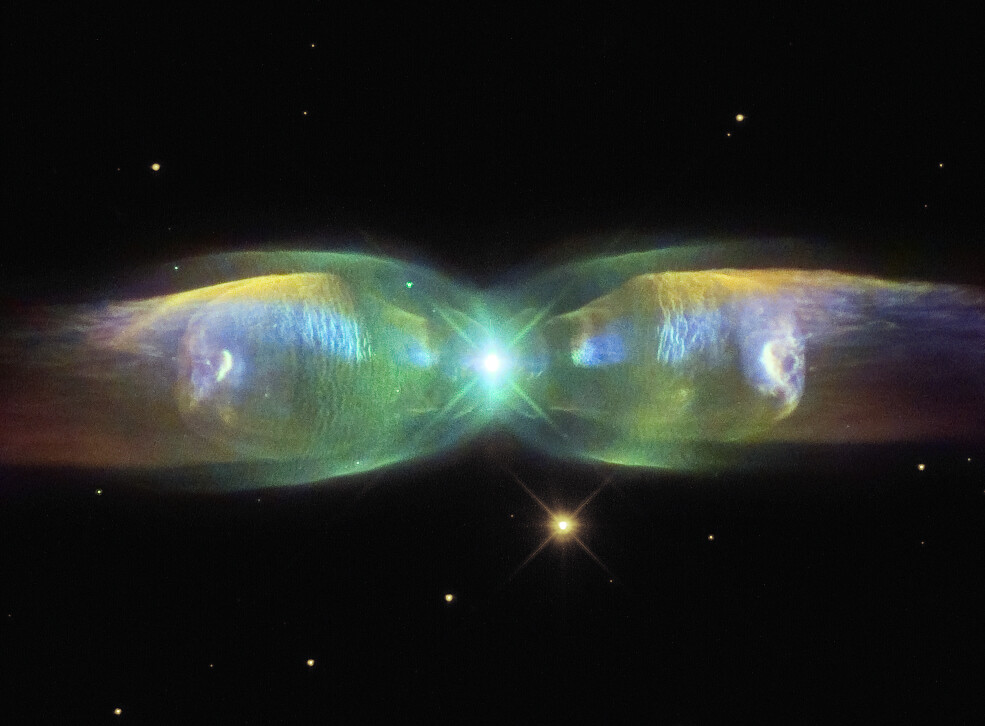2020年9月13日
M2-9: Wings of a Butterfly Nebula
Image Credit: Hubble Legacy Archive, NASA, ESA – Processing: Judy Schmidt
Explanation: Are stars better appreciated for their art after they die? Actually, stars usually create their most artistic displays as they die. In the case of low-mass stars like our Sun and M2-9 pictured here, the stars transform themselves from normal stars to white dwarfs by casting off their outer gaseous envelopes. The expended gas frequently forms an impressive display called a planetary nebula that fades gradually over thousands of years. M2-9, a butterfly planetary nebula 2100 light-years away shown in representative colors, has wings that tell a strange but incomplete tale. In the center, two stars orbit inside a gaseous disk 10 times the orbit of Pluto. The expelled envelope of the dying star breaks out from the disk creating the bipolar appearance. Much remains unknown about the physical processes that cause and shape planetary nebulae.
Almost Hyperspace: Random APOD Generator
Tomorrow’s picture: corny moonrise
M2-9:蝴蝶星云的翅膀
影像提供: Hubble Legacy Archive, NASA, ESA – 影像处理: Judy Schmidt
说明: 恒星是否也在去世后,作品才更受重视呢?事实上,恒星通常在死亡时,才有最具艺术性的展示。以太阳和图中的M2-9这类小质量的恒星为例,当它们从正常恒星演化成白矮星时,会抛弃外层的气壳。而所抛出的扩张气壳,经常会形成美丽动人的行星状星云,然后在数千年内慢慢消散无踪。离我们2,100光年远的M2-9,是一个蝴蝶状的行星状星云,而这张代表色影像里的蝶翼,诉说一个怪异但不完整的故事。在星云的中心,有两颗恒星在大约10倍冥王星轨道大小的气盘里互相旋绕。垂死恒星所抛出的气壳,得挤过这个气盘,因而形成双极瓣的结构。不过,造成行星状星云的诸多物理过程,目前仍有许多不明之处。
几乎超空间:随机APOD生成器
明日的图片: corny moonrise








cool